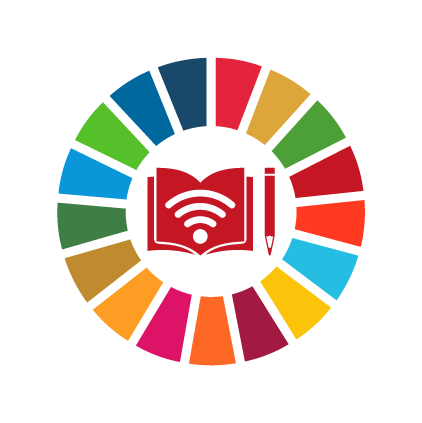Eswatini
Background Information
Region
Sub-Saharan Africa
World Bank income group
Lower middle income
Percent of population aged 10-24
31% (UNFPA, 2023)
Total primary school age population (both sexes)
195,890 (UIS, 2022)
Total secondary school age population (both sexes)
130,008 (UIS, 2022)
Proportion of women aged 20-24 years who were married or in a union before age 18
(% of women aged 20-24)5%
Source: UNSDG , 2014
Adolescent birth rate
(per 1,000 women ages 15-19)87
Source: UN Human Development Reports , 2013
Percentage of women who ever experienced physical violence since age 15
No data available
Percentage of married women employed in the last 12 months
(% of married or in-union women 15-49)53%
Source: DHS , 2007
Education Snapshot Back to Top
Number of years of free primary and secondary education guaranteed in legal frameworks
(Years)7
Source: UIS , 2022
Percentage of upper secondary schools providing life skills-based HIV and sexuality education within the formal curriculum or as part of extra-curricular activities
Percentage of schools100%
Source: UNESCO , 2018
Proportion of schools with access to single-sex basic sanitation facilities
Percentage of schools-
Primary 100%
(2016)
-
Lower secondary 97%
(2016)
-
Upper secondary 97%
(2016)
Source: UIS
Women as a percentage of teachers in tertiary education
No data available
Men as a percentage of teachers in pre-primary education
No data available
Expenditure on education as a percentage of total government expenditure
% GDP spent on educationSource: UIS , 2022
Gender parity index for achievement in mathematics, by education level (ratio)
No data available
Gender parity index for achievement in reading, by education level (ratio)
No data available
Proportion of students at the end of primary education achieving at least a minimum proficiency level in reading
-
Female 86%
-
Male 83%
Female: UIS, 2013
Male: UIS, 2013
Proportion of students at the end of primary education achieving at least a minimum proficiency level in mathematics
-
Female 33%
-
Male 42%
Female: UIS, 2013
Male: UIS, 2013
Experiencing bullying in the last 12 months in lower secondary education
-
Female 31%
-
Male 33%
Female: UNESCO, 2013
Male: UNESCO, 2013
Youth not in education, employment or training
-
Female 41%
-
Male 30%
Female: ILO, 2016
Male: ILO, 2016
Completion rate
Primary school age
-
Female 85%
-
Male 64%
Female: UIS, 2022
Male: UIS, 2014
Lower secondary school age
-
Female 54%
-
Male 47%
Female: UIS, 2014
Male: UIS, 2014
Upper secondary school age
-
Female 33%
-
Male 31%
Female: UIS, 2014
Male: UIS, 2014
Out-of-school rate
Primary school
-
Female 1%
-
Male 2%
Female: UIS, 2014
Male: UIS, 2014
Lower secondary school
-
Female 4%
-
Male 5%
Female: UIS, 2014
Male: UIS, 2014
Upper secondary school
-
Female 24%
-
Male 12%
Female: UIS, 2014
Male: UIS, 2014
Legal Frameworks Back to Top
Presence of legislation on child protection, to prevent corporal punishment in schools
1
No protection from violence in educational institutions
Source: HerAtlas , 2019
Presence of legislation protecting the right to education without discrimination based on sex/gender
2
Only enshrines the right to education or provides for a limited protection of this right
Source: HerAtlas , 2019
Presence of legislation to protect and facilitate education of pregnant adolescent girls
2
No explicit protection of the right to education of pregnant and parenting girls
Source: HerAtlas , 2019
Existence of processes to support coordinated action on gender equality in and through education by ministries, civil society, youth organizations and other actors
Data coming soon!
Existence of systematic processes to review and update curricula and learning resources, with a view to eradicating gender stereotypes and promoting gender equality
Data coming soon!
Training on gender-responsive pedagogies is embedded in teacher training programmes
Data coming soon!
Programs Back to Top
Funding Initiative/Portfolio
Community Grants Program
Funding Initiative/Portfolio
Comprehensive scholarship programme
Funding Initiative/Portfolio
Education Out Loud (EOL)
Funding Initiative/Portfolio
Girl Child Education Fund
Project/Program
Go Girls Connect!
Project/Program
Schools for Africa
Project/Program
Science, Technology, Engineering and Mathematics
Research Project/Report/Study
The Effect of COVID-19 on Education in Africa and its Implications for the Use of Technology: A Survey of the Experiences and Opinions of Educators and Technology Specialists
Government Programs Back to Top
Project/Program
Job shadowing program - Promoting women in STEM
Project/Program
Life Skills Education (LSE)
Network/Convening/Conference
Southern and Eastern Africa Consortium for Monitoring Educational Quality (SACMEQ)
Project/Program
DREAMS
Policy & Frameworks Back to Top
Policy
National Plan of Action for Children
The plan recognizes that while all children have the right to access education, gender and other factors can limit the realization of this right. Among the actions identified, the strategy calls for enhanced gender-transformative social norms and empowering children and young people to build gender-equitable and non-violence relationships.
